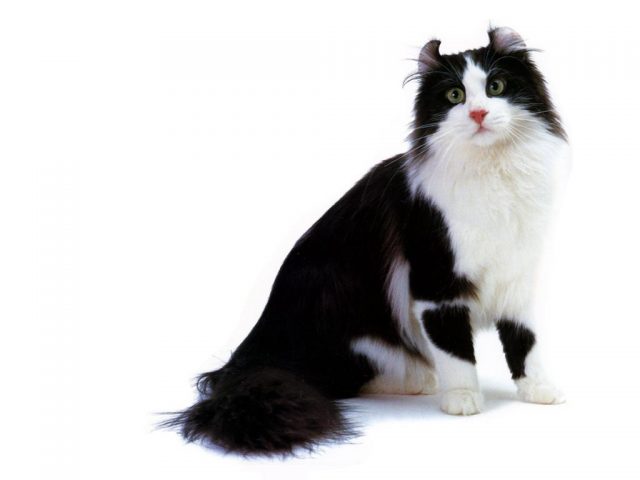Type the name of the breed you're looking for below
[wpdreams_ajaxsearchlite] Don't see the breed your're looking for? Click here and let us know!
Breed Characteristics
1 paw - breed exhibits the least amount of this characteristic
5 paws - breed exhibits most amount of this characteristic
American Curl
| Origin And History | On a typical hot June day in 1981, a stray longhaired black female cat with funny ears mooched a meal from Joe and Grace Ruga in Lakewood, California, and moved in. “Shulamith” is the original American Curl to which all bona fide pedigrees trace their origin. No one ever suspected that from that simple encounter, and the birth of some kittens 6 months later, would grow a worldwide debate about the genetics behind those unusual curled ears. When selective breeding began in 1983, fanciers bred the American Curl with an eye toward developing a show breed. In analyzing data on 81 litters (383 kittens), renowned feline geneticist Roy Robinson of London, England, confirmed that the ear-curling gene is autosomal dominant, which means that any cat with even one copy of the gene will show the trait. In the December 1989 Journal of Heredity, Robinson reported finding no defects in any of the crosses he analyzed. This information provided the pathway for a new and healthy breed…and one with an outstanding temperament. Indeed, the discovery of a novel cat is an event of great importance to feline fans and fanatics, and especially true when it’s inherently born to radiate well-being and good things to all fortunate enough to hold one. As the founder of this amazingly spiritual breed says, “They are not just ‘decorator’ cats. You might say that they are ‘designer’ cats, perhaps even signed masterpieces of a humor-loving Creator.’” |
| Personality | Curls have qualities other than the whimsical ears to make them attractive pets. They are people cats that do not show any of the stereotypical aloofness, and are affectionate without harassing people for attention the way some breeds can. They delight in perching on shoulders and love to pat and nuzzle their peoples' faces. Curls are a 'fetching' breed, easily taught to play fetch, and never lose their love of play. They are also noted for their affinity with children. While not as active as the Abyssinian, American Curls are playful and energetic. They also display the typical cat curiosity and want to be right there to investigate any changes in their environment. |
Physical Attributes
| Appearance | When Curls are born, their ears are straight. In 3 to 5 days, they start to curl back, staying in a tight rosebud position and unfurling gradually until permanently “set” at around 16 weeks. This is the time breeders determine the kitten’s ear quality as either pet or show in addition to the kitten’s overall conformation. The degree of ear curl can vary greatly, ranging from almost straight (pet quality) to a show quality ear with an arc of 90-180 degrees resembling a graceful shell-like curvature. Although the distinctive feature of the American Curl is their uniquely curled ears, the medium-sized rectangular body, silky flat-lying coat, and expressive walnut-shaped eyes are equally indicative of the breed. They are available in both long and shorthair color and pattern varieties, and since there is minimal undercoat, the Curl sheds little and requires hardly any grooming. |
| Health | Due to its large genetic pool with non-pedigree cats, the American Curl is generally a healthy breed. These cats' ears however require frequent cleaning to prevent infections, and needs gentle handling to prevent damage. Various breedings between curled cats and normal cats revealed a dominant inheritance of the curl gene. Sex linked distribution was not found. The mutant gene was designated as curl and is symbolized by Cu. Another mutation of the ear pinna was found in Scottish Fold cats. In these cats anomalies were rarely found when heterozygous, however in homozygous (FdFd) cats, animals suffer from dysplasia of the lower limbs and tail. So the question arises if homozygous curls (CuCu) could also be affected by cartilage formation defects and bone abnormalities. However observations of a CuCu cat over two years showed no sign of anomaly. |



